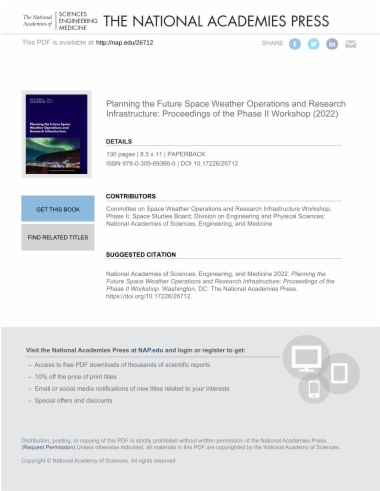

Affecting technological systems at a global-scale, space weather can disrupt high-frequency radio signals, satellite-based communications, navigational satellite positioning and timing signals, spacecraft operations, and electric power delivery with cascading socioeconomic effects resulting from these disruptions. Space weather can also present an increased health risk for astronauts, as well as aviation flight crews and passengers on transpolar flights.
In 2019, the National Academies was approached by the National Aeronautics and Space Administration, the National Oceanic and Atmospheric Administration, and the National Science Foundation to organize a workshop that would examine the operational and research infrastructure that supports the space weather enterprise, including an analysis of existing and potential future measurement gaps and opportunities for future enhancements. This request was subsequently modified to include two workshops, the first ("Phase I") of which occurred in two parts on June 16-17 and September 9-11, 2020.
The Phase II workshop occurred on April 11-14, 2022, with sessions on agency updates, research needs, data science, observational and modeling needs, and emerging architectures relevant to the space weather research community and with ties to operational needs. This publication summarizes the presentation and discussion of that workshop.